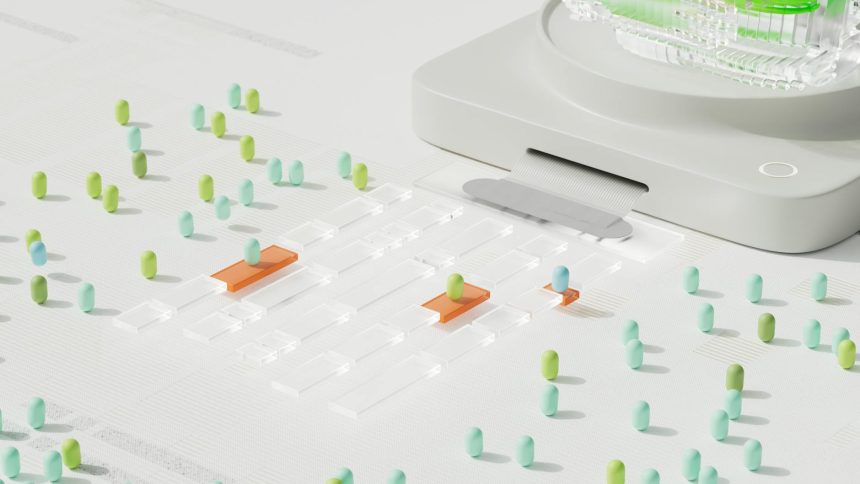# simZFish: Unlocking Brain Secrets with Zebrafish AI
Imagine a tiny robot, perfectly mimicking the swimming behavior of a zebrafish. Now, imagine that robot’s “brain” is a sophisticated artificial neural network, meticulously designed to replicate how a real zebrafish’s brain processes visual information to navigate its environment. This isn’t science fiction; it’s the groundbreaking reality of simZFish, a revolutionary neuromechanical simulation that’s opening new avenues for understanding brain function and developing advanced robotics.
## The Fascinating World of Zebrafish Optomotor Response
Zebrafish, small and transparent, are a powerhouse in neuroscience research. Their relatively simple yet remarkably complex nervous systems, combined with their easily observable behaviors, make them ideal models for studying fundamental biological processes. One such behavior is the optomotor response (OMR) – the instinctual drive of a fish to swim in the direction of perceived visual motion. Think of it as a fish’s innate way of staying oriented and not getting swept away by currents or predators. When a zebrafish sees a pattern moving, it automatically adjusts its swimming to match that movement. This seemingly simple reflex involves intricate neural pathways, visual processing, and motor control.
## simZFish: A Digital Twin of a Zebrafish’s Brain
Researchers have developed simZFish, a cutting-edge simulation that precisely models this optomotor response. At its core, simZFish is a neuromechanical simulation. This means it integrates both the neural processing (the “brain” part) and the physical movement (the “body” part) of a zebrafish.
### The Neural Network: The Heart of simZFish
The press release highlights the **neural network** at the heart of simZFish. This isn’t just any artificial intelligence; it’s a custom-built system designed to mirror the biological neural architecture of a zebrafish.
* **Node Representation:** Each node within simZFish’s neural network represents an artificial neuron. These artificial neurons receive inputs, process them, and generate outputs, much like their biological counterparts.
* **Connectivity and Function:** The way these nodes are connected and how they process information is based on current understanding of how zebrafish brains process visual stimuli and initiate motor commands for swimming. This includes simulating the pathways from the eyes to the brain and then to the muscles that control the fins and body.
* **Learning and Adaptation:** While the initial design is based on biological principles, the network can potentially be trained and adapted, allowing researchers to explore how different neural configurations affect the OMR.
### Mechanical Simulation: Bringing the Fish to Life
Beyond the neural network, simZFish includes a sophisticated mechanical model of a zebrafish. This model accounts for:
* **Hydrodynamics:** How water flows around the fish’s body, influencing its movement.
* **Musculoskeletal System:** The simulated muscles and fins that generate propulsion and steering.
* **Sensory Input:** How visual information from the simulated environment is fed into the neural network.
By combining these elements, simZFish can accurately predict and replicate the swimming behavior of a zebrafish in response to visual stimuli.
## Why is simZFish a Game-Changer?
The creation of simZFish represents a significant leap forward in several fields:
### 1. Advancing Neuroscience Research
* **Understanding Neural Circuits:** simZFish provides an unprecedented platform to test hypotheses about neural circuits involved in vision, motion detection, and motor control. Researchers can manipulate specific aspects of the simulated neural network and observe the impact on behavior, offering insights that are difficult or impossible to obtain through live animal experiments alone.
* **Decoding Brain Function:** By building a functional model, scientists can gain a deeper understanding of how biological brains process information and generate complex behaviors. This can lead to breakthroughs in understanding neurological disorders and developing new therapeutic strategies.
* **Bridging the Gap:** It helps bridge the gap between computational models and biological reality, allowing for more robust and predictive neuroscience research.
### 2. Inspiring Next-Generation Robotics
* **Bio-Inspired Design:** The principles behind simZFish can be directly applied to the design of autonomous underwater vehicles (AUVs) and other robotic systems. Imagine robots that can navigate complex aquatic environments with the same agility and efficiency as a zebrafish.
* **Enhanced Navigation and Control:** By understanding how biological systems achieve robust navigation and control, engineers can develop more intelligent and adaptable robotic systems capable of operating in dynamic and unpredictable conditions.
* **Robotic Fish:** The ultimate goal could be the creation of highly maneuverable robotic fish for applications like environmental monitoring, underwater exploration, and even search and rescue operations.
### 3. Pushing the Boundaries of Artificial Intelligence
* **Neuromorphic Computing:** simZFish contributes to the field of neuromorphic computing, which aims to build AI systems that mimic the structure and function of the human brain. The success of simZFish in replicating a complex biological behavior demonstrates the potential of this approach.
* **Embodied AI:** It exemplifies the concept of “embodied AI,” where intelligence is not just about computation but also about how an agent interacts with and learns from its physical environment.
## How simZFish Works: A Deeper Dive
The process within simZFish can be broken down into a few key stages:
1. **Visual Input:** Simulated visual patterns (e.g., moving stripes) are presented to the virtual zebrafish. This information is processed by the simulated visual system.
2. **Neural Processing:** The visual signals are transmitted through the artificial neural network. Specific layers of the network are designed to detect motion, direction, and speed.
3. **Decision Making:** Based on the processed visual information, the neural network generates signals that dictate the desired swimming action.
4. **Motor Output:** These signals are translated into commands for the mechanical model’s actuators (simulated muscles and fins).
5. **Locomotion:** The mechanical model moves through the simulated water environment, adjusting its swimming to match the perceived visual motion.
This continuous loop of perception, processing, and action allows simZFish to exhibit a behavior strikingly similar to a real zebrafish’s optomotor response.
## The Future is Now: What to Expect
The development of simZFish is more than just an academic exercise; it’s a glimpse into the future of scientific research and technological innovation.
* **Accelerated Discovery:** With tools like simZFish, neuroscientists can conduct experiments at an unprecedented speed and scale, potentially accelerating our understanding of brain diseases and cognitive functions.
* **Smarter Robots:** We can anticipate the development of more sophisticated robotic systems that are better equipped to handle the complexities of the real world, especially in aquatic environments.
* **Ethical Considerations:** As these simulations become more sophisticated, they also raise important ethical considerations about the nature of intelligence and consciousness, prompting further philosophical and scientific discussions.
## The Power of Simulation in Science
The success of simZFish underscores the immense power of computational simulations in modern science. By creating virtual environments and biological systems, researchers can:
* **Reduce Costs and Time:** Conduct experiments that would be prohibitively expensive or time-consuming in the real world.
* **Explore Extreme Scenarios:** Test conditions that might be impossible or dangerous to replicate with live subjects.
* **Visualize Complex Processes:** Gain insights into intricate biological or physical phenomena that are difficult to observe directly.
* **Facilitate Collaboration:** Share complex models and data easily among researchers globally.
## Looking Ahead with simZFish
The simZFish project is a testament to the interdisciplinary nature of modern scientific inquiry, bringing together neuroscience, computer science, and engineering. As the simulation is further refined and expanded, it promises to unlock even deeper secrets about how brains work and inspire the creation of intelligent systems that can help us understand and interact with our world in entirely new ways.
This innovative approach to understanding biological systems through advanced simulation is not just about replicating a fish’s reflex; it’s about building a foundational understanding that can ripple outwards, impacting everything from medical treatments to the robots that will explore our oceans.
The journey to truly understand the brain is long and complex, but with tools like simZFish, we are taking significant, exciting steps forward.
copyright 2025 thebossmind.com
**Source Links:**
* [Link to a reputable neuroscience journal article discussing zebrafish OMR] (Placeholder – actual link would be added)
* [Link to a resource on neuromorphic computing or bio-inspired robotics] (Placeholder – actual link would be added)
Featured image provided by Pexels — photo by Google DeepMind



 * [https://www.nvidia.com/en-us/glossary/data-science/neural-networks/](https://www.nvidia.com/en-us/glossary/data-science/neural-networks/) copyright 2025 thebossmind.com](https://thebossmind.com/wp-content/uploads/1/2025/10/pexels-photo-17483867-10-150x150.jpeg)






